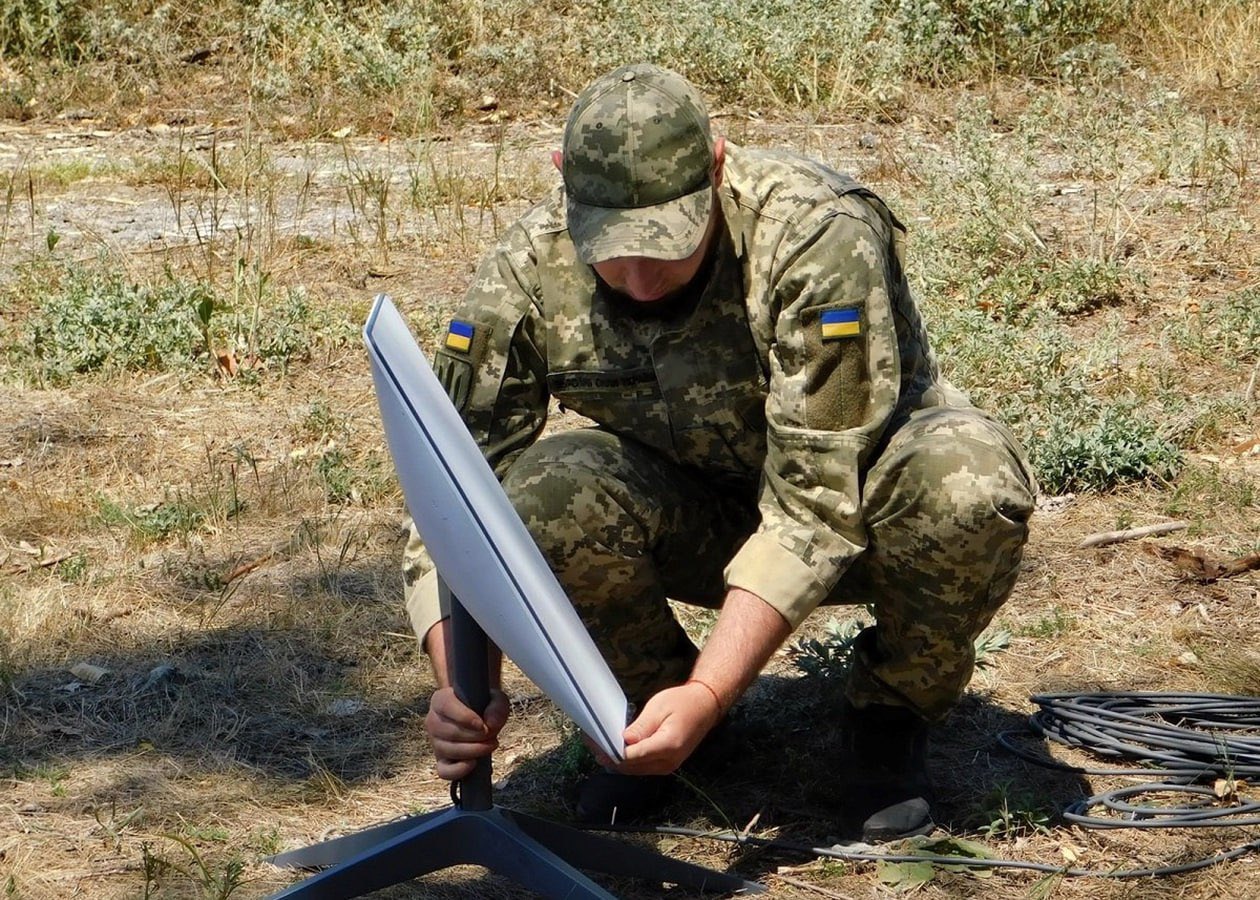Chinese researchers have stepped up efforts to develop countermeasures against SpaceX’s Starlink constellation, widely viewed as preparation for a possible conflict over Taiwan.
As part of this campaign, the researchers recently conducted detailed simulations of electronic warfare attacks against the massive satellite network.
Since SpaceX owner Elon Musk provided Starlink to Ukraine in the early days of the war, the satellite network has enabled secure communications, real-time command and control, reconnaissance support, and connectivity for drones and unmanned systems.
Beijing, which continues to claim Taiwan as its territory, has watched Starlink’s expanding military role with growing alarm. It fears that Taiwan—supported by the United States and regional allies—could leverage the constellation for peacetime surveillance and, in wartime, to guide strikes against Chinese forces.
To address this menace, Chinese researchers have been working relentlessly to develop systems that could neutralise it if and when required.
Jamming The Starlink: A New Experiment
Russia initially managed to jam Starlink signals but quickly lost that capability after SpaceX quietly reconfigured the constellation and pushed software updates, shifting the battlefield advantage
China took careful note of these developments. The People’s Liberation Army (PLA) is now pursuing electromagnetic supremacy against an adversary equipped with roughly 10,000 satellites that can manoeuvre, adapt, and resist jamming in real time.
A peer-reviewed study titled “Simulation research of distributed jammers against mega-constellation downlink communication transmissions,” authored by researchers from Zhejiang University and the Beijing Institute of Technology (BIT) and reported by the South China Morning Post (SCMP), offers the most detailed public insight to date into how the PLA might attempt to disrupt Starlink.
Notably, this study was conducted more than a year after Chinese researchers first monitored and analyzed the complete electromagnetic spectrum in real time in February 2024. At the time, reports noted that following this technological breakthrough in electronic warfare, the adversaries on the battlefield would have “nowhere to hide.”
“The orbital planes of Starlink are not fixed, and the movement trajectories of the constellation are highly complex, with the number of satellites entering the visible area constantly changing,” wrote the team led by BIT defence researcher Yang Zhuo. “This spatiotemporal uncertainty poses a significant challenge for any third party attempting to monitor or counter the Starlink constellation,” it added.
It is easier for China to counter traditional satellite communication that relies on large satellites fixed above the equator. However, Starlink has a huge network of satellites in low Earth orbit. This means that instead of connecting to a single satellite, a single user interface quickly switches between multiple satellites, forming a mesh network in the sky.
The Chinese researchers discovered that the connection switches between the signals within seconds. This means that if one of these satellites is jammed, the entire network continues to function. Starlink uses sophisticated phased-array antennas and real-time frequency-hopping strategies, which are largely managed remotely by SpaceX.

To counter this massive network, the team developed a crucial strategy: a distributed jamming technique.
They surmised that instead of relying on a few powerful ground stations, hundreds or thousands of small, synchronized jammers would need to be dispersed throughout the sky on drones and balloons to create an electromagnetic shield over the battlefield.
To test this strategy, the team used real Starlink satellite data to replicate the satellites’ dynamic locations over 12 hours above eastern China.
As per the report, the team of Chinese researchers built a sophisticated simulation that modeled: the actual signal strength of Starlink satellite downlinks; the directional reception characteristics of user-terminal antenna; radio-wave propagation paths both from ground-based jammers up to satellites and from satellites down to terminal; and the combined jamming effect when multiple jammers, placed at different locations and angles, simultaneously illuminate the same user terminal.
This apparently enabled them to assess how coordinated ground-based electronic attacks could effectively suppress or completely deny Starlink coverage in targeted regions.

Then, like a chessboard in the sky, they created a grid of virtual jammers that flew at 20 kilometers and were spaced 5 to 9 kilometers apart.
Each jammer mimicked genuine electronic warfare payloads by generating noise at varying power levels.
Two types of antennas were tested: a narrow-beam antenna that was powerful and focused but needed accuracy, and a wide-beam antenna that covered more ground but dispersed energy thinly.
For each location on the ground, the simulation determined if a Starlink terminal could sustain a usable signal.
Under ideal circumstances, each jammer node inhibited Starlink reception over an average area of 38.5 square kilometers using a strong but expensive 26 decibel-watt (dBW jamming power (400 watts) source, a narrow-beam antenna, and a 7-kilometer spacing.
Taiwan is about 36,000 square kilometers in size. This means that at least 935 synchronized interference nodes would be needed to cover the entire island with reliable Starlink suppression. However, this figure does not account for redundancy against failures, signal-blocking terrain such as mountains, or Starlink’s upcoming anti-jamming upgrades.
The team said the drone deployment scale might be doubled to about 2,000 units by using a less powerful but more cost-effective 23 dBW power supply spaced 5 kilometers apart. However, Yang’s team noted that the results were preliminary because Starlink has kept some key technology classified.
When asked about the experiment, Group Captain Arvind Pandey (Retd), a geospatial intelligence professional, told the EurAsian Times, “It is known that technically degrading the LEO constellation is possible through Hard kill (DEW Methods, Killer satellites) and Soft kill (EW Methods). China has studied this methodically, leading to this outcome. This study claims to use 1000-2000 drones to make an airborne mesh for degrading the Starlink constellation through soft kill in a limited area, which is very much doable, especially with AI-powered interference technology.”
“Using ground stations to jam the satellites has been in use for years and has already been tested, but was found less effective in the Ukraine War. Space-based degradation has also been tested by both countries and is available for use,” he added.
China’s Silent War Against Starlink
Starlink already has over 9,000 satellites in LEO, and eventually plans to launch tens of thousands more. In fact, according to reports, SpaceX hopes to expand its mega-constellation to as many as 42,000 satellites.
China has been developing a range of measures to counter Starlink’s advantage. For instance, in 2023, it developed a compact power source that could drastically reduce the size of a high-power microwave weapon capable of downing Starlink satellites.
According to Chinese media claims, this device could produce up to 10 gigawatts of power with a frequency of 10 pulses per second. The high-intensity energy produced by this device could generate microwave beams potent enough to damage drones, airplanes, and even satellites.
In June 2024, the People’s Liberation Army (PLA) scientists claimed that PLA submarines equipped with laser weapons would be able to destroy SpaceX’s Starlink satellites if China’s security was in jeopardy.
The research stated that a submarine fitted with a megawatt-class solid-state laser could fire at satellites while submerged, then retract its “optoelectronic mast” before diving back to the ocean floor.
The project team, headed by Wang Dan, a professor at the Naval Submarine Academy, suggested that this kind of laser attack submarine could be mass-produced in the future and stationed in different oceans to counter military threats to China.
In January 2025, a team of Chinese scientists simulated a space operation targeting the Starlink constellation, demonstrating that the massive network is not as invulnerable as originally believed.
The computer simulation found that about 1,400 Starlink satellites could be successfully approached by just 99 Chinese satellites in about 12 hours. These satellites may be outfitted with lasers, microwaves, and other tools to carry out tracking, reconnaissance, and other operations.
More recently, in August 2025, the Associated Press (AP) reviewed as many as 64 research papers published in Chinese journals on Starlink and countermeasures to be adopted against it in the event of war.
“Starlink’s omnipresence and potential military applications have unnerved Beijing and spurred the nation’s scientists to action. In paper after paper, researchers painstakingly assessed the capabilities and vulnerabilities of a network that they clearly perceive as menacing and strove to understand what China might learn — and emulate — from Musk’s company,” it stated.
In addition to developing countermeasures against Starlink, China is also concurrently developing its own low-Earth orbit (LEO) satellite system, the Qianfan mega-constellation project, commonly known as G60. The project aims to build more than 15,000 wide-screen multimedia satellites in low Earth orbit (LEO) as a rival to Starlink.
It must be highlighted, though, that the methods designed to destroy Starlink could also be used against G-60.
- Contact the author at sakshi.tiwari13 (at) outlook.com
- Follow EurAsian Times on Google News




